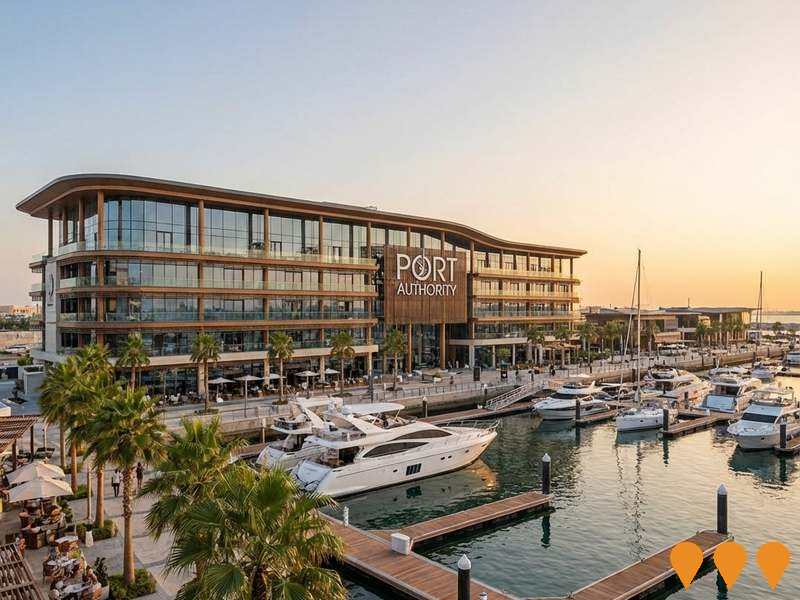Chart Color Schemes
est. as @ -- *
ABS ERP | -- people | --
2021 Census | -- people
Sales Activity
Curious about local property values? Filter the chart to assess the volume and appreciation (including resales) trends and regional comparisons, or scroll to the map below view this information at an individual property level.
Find a Recent Sale
Sales Detail
Population
Belgian Gardens - Pallarenda has shown very soft population growth performance across periods assessed by AreaSearch
Belgian Gardens - Pallarenda's population was 3,192 people as of Aug 2021. By Aug 2025, the population is estimated to be around 3,233, reflecting an increase of 41 people (1.3%) since the 2021 Census. This change is inferred from ABS estimates: 3,215 in June 2024 and additional validated new addresses since the Census date. The population density is 81 persons per square kilometer. Overseas migration contributed approximately 69.6% of overall population gains during recent periods.
AreaSearch uses ABS/Geoscience Australia projections for each SA2 area, released in 2024 with a base year of 2022. For areas not covered by this data and years post-2032, Queensland State Government's SA2 area projections are adopted, released in 2023 based on 2021 data. These state projections do not provide age category splits; hence proportional growth weightings aligned with ABS Greater Capital Region projections (released in 2023, based on 2022 data) are applied. Based on projected demographic shifts and latest population numbers, the area is anticipated to increase by 93 persons to 2041, reflecting an increase of 2.3% over the 17 years.
Frequently Asked Questions - Population
Development
The level of residential development activity in Belgian Gardens - Pallarenda is very low in comparison to the average area assessed nationally by AreaSearch
Belgian Gardens - Pallarenda has averaged approximately five new dwelling approvals annually over the past five financial years, totalling 26 homes. As of FY-2025/26, one approval has been recorded. Despite a decrease in population during this period, development activity has been adequate relative to the population change, which could be beneficial for buyers. The average expected construction cost value of new homes is $1,201,000, indicating developers' focus on the premium market with high-end developments.
In FY-2025/26, commercial development approvals totalling $1.3 million have been recorded, suggesting a predominantly residential focus in the area. Compared to the rest of Queensland, Belgian Gardens - Pallarenda shows significantly reduced construction activity, 62.0% below the regional average per person. This constrained new construction typically reinforces demand and pricing for existing dwellings. The area also falls below the national average for construction activity, suggesting its established nature and potential planning limitations. New development in Belgian Gardens - Pallarenda consists of 44.0% standalone homes and 56.0% townhouses or apartments. This shift towards higher-density living creates more affordable entry points, benefiting downsizers, investors, and first-home buyers. This change represents a notable departure from the area's existing housing composition, which is currently 66.0% houses.
The estimated population per dwelling approval in the area is 551 people, reflecting its quiet, low activity development environment. Future projections indicate Belgian Gardens - Pallarenda adding 75 residents by 2041. Based on current development patterns, new housing supply should readily meet demand, offering good conditions for buyers and potentially facilitating population growth beyond current projections.
Frequently Asked Questions - Development
Infrastructure
Belgian Gardens - Pallarenda has emerging levels of nearby infrastructure activity, ranking in the 33rdth percentile nationally
Changes to local infrastructure significantly influence an area's performance. AreaSearch identified 14 projects likely impacting the area. Key projects include Army Aviation Program of Works at RAAF Base Townsville, Mater Private Hospital Townsville Relocation, Weststate Private Hospital, and Lavarack Barracks Upgrades. The following list details those most relevant.
Professional plan users can use the search below to filter and access additional projects.
INFRASTRUCTURE SEARCH
 Denotes AI-based impression for illustrative purposes only, not to be taken as definitive under any circumstances. Please follow links and conduct other investigations from the project's source for actual imagery. Developers and project owners wishing us to use original imagery please Contact Us and we will do so.
Denotes AI-based impression for illustrative purposes only, not to be taken as definitive under any circumstances. Please follow links and conduct other investigations from the project's source for actual imagery. Developers and project owners wishing us to use original imagery please Contact Us and we will do so.
Frequently Asked Questions - Infrastructure
Army Aviation Program of Works - RAAF Base Townsville
AUD 700+ million upgrade of facilities at RAAF Base Townsville and Townsville Field Training Area to accommodate 29 AH-64E Apache Guardian helicopters from 2025, relocation of the 1st Aviation Regiment from Darwin, and the 16th Aviation Brigade HQ. Works include new working accommodation, training facilities, aircraft hangars, maintenance facilities, ordnance loading aprons, runway extensions and strengthening, logistics storage and explosive ordnance facilities. Boeing Defence Australia is the prime contractor for Apache sustainment contractor at the new northern hub.

Weststate Private Hospital
New five-storey short-stay private hospital on the former West State School site in West End, Townsville. Features four operating theatres, one procedure room, 19 day-surgery beds and 26 overnight beds. Construction commenced February 2022. Despite reported disputes in 2024-2025 between fund-through developer Centuria Healthcare and operator partner, works remain active on site as of November 2025 with structural framing and facade installation progressing.
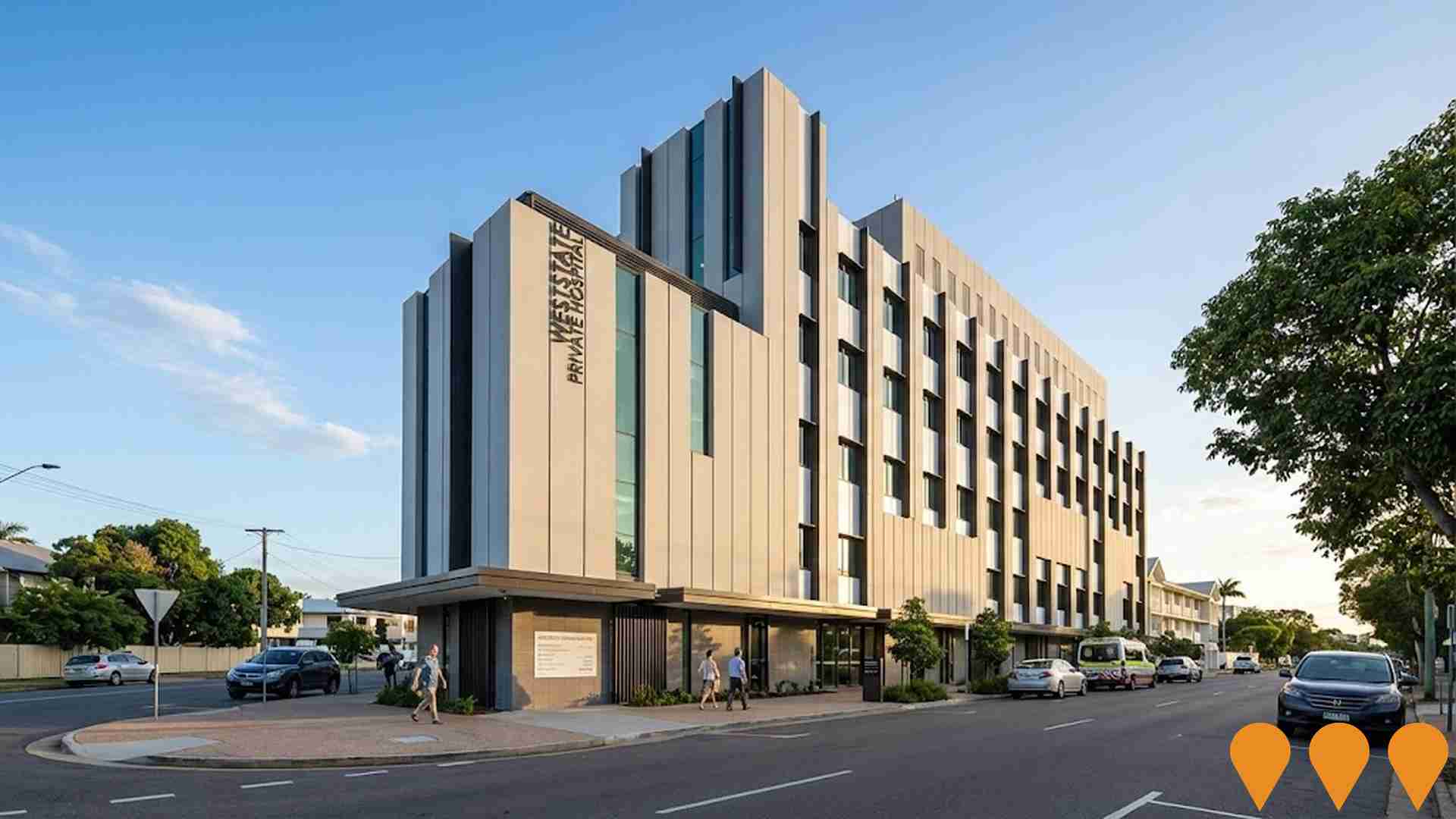
North Shore Masterplanned Community
A premier masterplanned community spanning over 900 hectares, featuring approximately 5600 homes, a large town centre, state and private schools, extensive parkland, childcare, and amenities like retail outlets, medical centres, and recreational facilities.
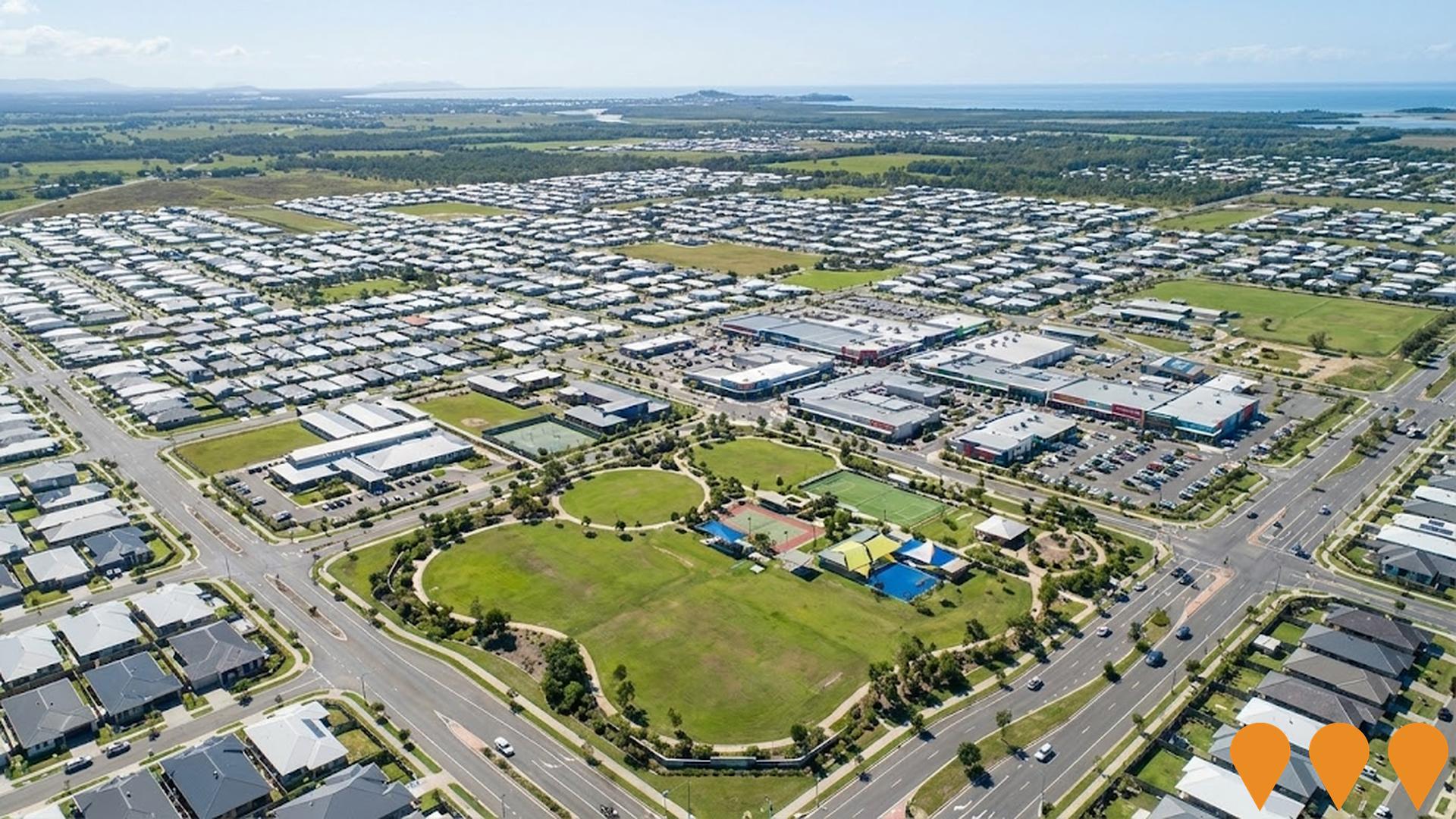
Harris Crossing Estate
Masterplanned community in Townsville with a total of 800 lots (300m2 to 1280m2) along the Bohle River. Features over 70 hectares of parklands, a playground, and North Queensland's first Disc Golf Course. The estate includes a Display Village and a separate, approved 295-home Living Gems over-50s land lease community (99 Hogarth Drive) that commenced early works in 2025, complementing the family-oriented development. Land lots and house and land packages are currently selling in various releases.
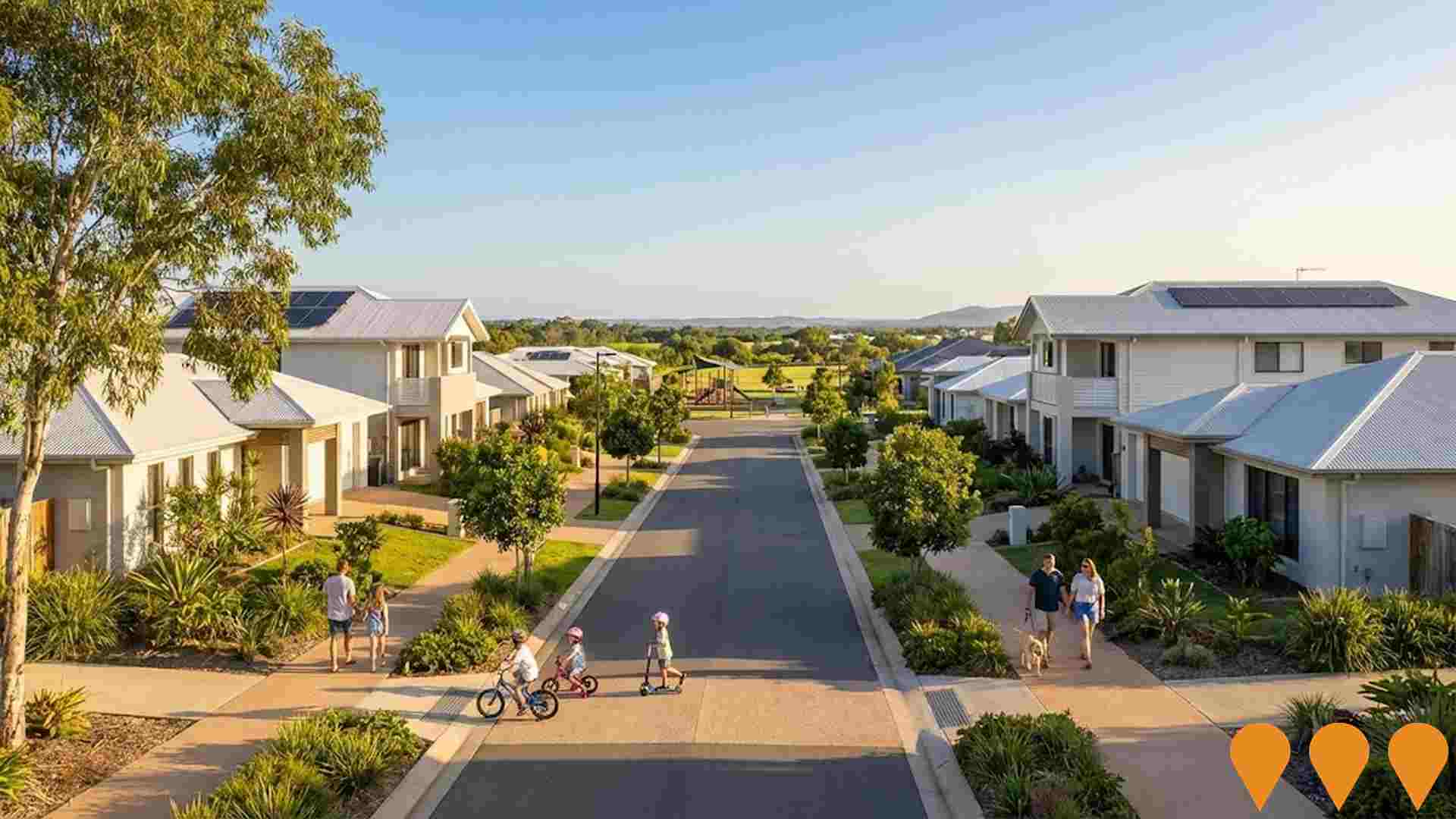
Mater Private Hospital Townsville Relocation
Relocation and modernization of private healthcare facilities to better serve the community with state-of-the-art medical technology and infrastructure.

Cosgrove Estate
A master-planned residential community in Townsville's growth corridor, featuring over 2,700 lots across seven villages on 250 hectares, including parks, open spaces, walking tracks, and an environmental corridor along the Bohle River. It offers affordable land lots with connectivity to amenities, future shopping centre, and natural reserves.

North Ward Road Intersection Upgrades (Stage 1)
High Risk Roads program safety upgrades carried out at various locations along North Ward Road including minor intersection improvements, new turning lanes, line marking, signage, active transport enhancements with green bicycle lanes and pedestrian infrastructure including raised wombat crossings, and traffic signal changes to improve traffic flow and safety. Works included over 50 individual intersection treatments including signalisation of key intersections, removal of slip lanes for improved pedestrian safety, installation of dedicated bicycle lanes, and refreshed line marking throughout the corridor.

Lavarack Barracks Upgrades
$1 billion North Australia Bases upgrade including $19 million for new military working dog facility. Major expansion of Australia's largest Army base with new accommodation, training facilities and infrastructure to support expanded operations in northern Australia.
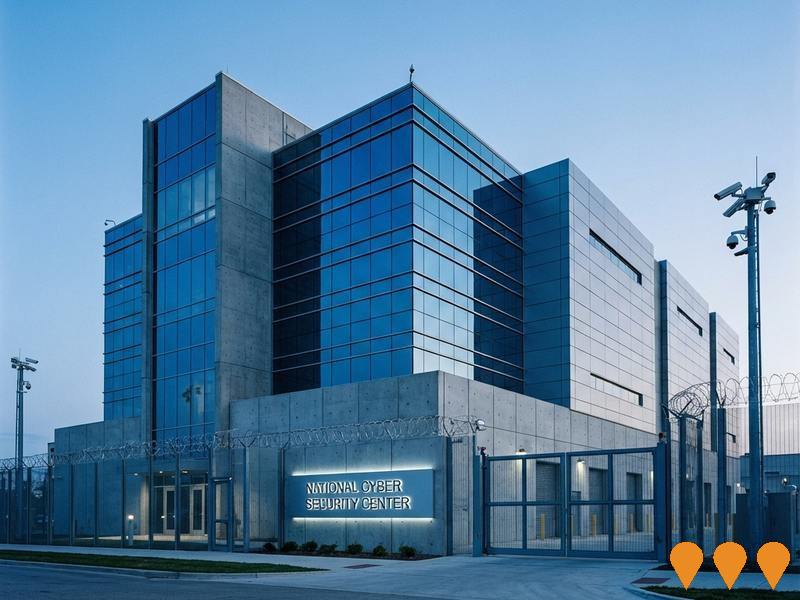
Employment
Despite maintaining a low unemployment rate of 3.8%, Belgian Gardens - Pallarenda has experienced recent job losses, resulting in a below average employment performance ranking when compared nationally
Belgian Gardens - Pallarenda has an educated workforce with notable representation in essential services sectors. As of June 2025, the unemployment rate is 3.8%.
In this month, 1,565 residents are employed while the unemployment rate is 0.1% lower than Rest of Qld's rate of 3.9%. Workforce participation mirrors Rest of Qld's figure of 59.1%. Key employment industries include health care & social assistance, education & training, and public administration & safety. The area specialises in public administration & safety with an employment share 1.9 times the regional level.
Agriculture, forestry & fishing has limited presence at 0.5% compared to the regional 4.5%. Local employment opportunities seem limited as Census working population is lower than resident population. Between June 2024 and June 2025, labour force levels decreased by 1.8%, employment declined by 3.2%, leading to a 1.4 percentage point rise in unemployment rate. In comparison, Rest of Qld saw employment grow by 1.8% and labour force by 2.0%, with unemployment rising by 0.2%. National employment forecasts from Jobs and Skills Australia (May 2025) project growth of 6.6% over five years and 13.7% over ten years. Applying these projections to Belgian Gardens - Pallarenda's industry mix suggests local growth of approximately 7.0%% over five years and 14.4% over ten years, though this is a simple extrapolation for illustrative purposes only.
Frequently Asked Questions - Employment
Income
Income analysis reveals strong economic positioning, with the area outperforming 60% of locations assessed nationally by AreaSearch
Belgian Gardens - Pallarenda's median income among taxpayers was $55,539 and average income stood at $75,581 in financial year 2022. These figures compare to Rest of Qld's median income of $50,780 and average income of $64,844 respectively. As of September 2025, estimates based on Wage Price Index growth of 13.99% since financial year 2022 would be approximately $63,309 (median) and $86,155 (average). Census data shows personal income ranks at the 69th percentile ($910 weekly), with household income at the 44th percentile. Income distribution reveals that 24.2% of individuals earn between $1,500 - 2,999, mirroring the regional figure of 31.7%. After housing expenses, 86.4% of income remains for other expenses. Belgian Gardens - Pallarenda's SEIFA income ranking places it in the 6th decile.
Frequently Asked Questions - Income
Housing
Belgian Gardens - Pallarenda displays a diverse mix of dwelling types, with above-average rates of outright home ownership
Belgian Gardens-Pallarenda's dwelling structure, as per the latest Census, consisted of 65.6% houses and 34.4% other dwellings. In comparison, Non-Metro Qld had 81.3% houses and 18.7% other dwellings. Home ownership in Belgian Gardens-Pallarenda was 34.5%, with mortgaged dwellings at 32.4% and rented ones at 33.1%. The median monthly mortgage repayment was $1,733, higher than Non-Metro Qld's average of $1,517. Median weekly rent in the area was $280, compared to Non-Metro Qld's $305. Nationally, Belgian Gardens-Pallarenda's mortgage repayments were lower at $1,733 against Australia's average of $1,863, while rents were substantially below the national figure of $375.
Frequently Asked Questions - Housing
Household Composition
Belgian Gardens - Pallarenda features high concentrations of lone person households and group households, with a lower-than-average median household size
Family households account for 59.9% of all households, consisting of 25.9% couples with children, 25.2% couples without children, and 8.7% single parent families. Non-family households make up the remaining 40.1%, with lone person households at 35.9% and group households comprising 4.0% of the total. The median household size is 2.3 people, which is smaller than the Rest of Qld average of 2.5.
Frequently Asked Questions - Households
Local Schools & Education
Educational outcomes in Belgian Gardens - Pallarenda fall within the lower quartile nationally, indicating opportunities for improvement in qualification attainment
Educational attainment in Belgian Gardens - Pallarenda shows significant superiority over broader benchmarks. 36.2% of residents aged 15+ hold university qualifications, compared to 20.1% in the SA4 region and 20.6% in the Rest of Qld. Bachelor degrees are most prevalent at 23.5%, followed by postgraduate qualifications (9.4%) and graduate diplomas (3.3%). Vocational credentials are also prominent, with 31.9% of residents aged 15+ holding such qualifications - advanced diplomas at 10.1% and certificates at 21.8%.
Educational participation is high, with 30.8% of residents currently enrolled in formal education. This includes 10.7% in primary education, 8.3% in secondary education, and 6.5% pursuing tertiary education. The area has educational provisions such as Cleveland Education and Training Centre and Belgian Gardens State School, serving a total of 673 students. The area demonstrates varied educational conditions with a mix including one primary school and one K-12 school. School capacity exceeds typical residential needs (20.8 places per 100 residents vs 16.7 regionally), indicating the area serves as an educational center for the broader region.
Frequently Asked Questions - Education
Schools Detail
Nearby Services & Amenities
Transport
Transport servicing is low compared to other areas nationally based on assessment of service frequency, route connectivity and accessibility
Transport analysis shows 23 active stops operating in Belgian Gardens - Pallarenda area, served by buses. These stops are covered by three routes offering a total of 258 weekly passenger trips. Residential accessibility to transport is rated excellent, with residents typically located 173 meters from the nearest stop.
Service frequency averages 36 trips per day across all routes, translating to about 11 weekly trips per individual stop.
Frequently Asked Questions - Transport
Transport Stops Detail
Health
Health performance in Belgian Gardens - Pallarenda is lower than average with prevalence of common health conditions notable across both younger and older age cohorts
Belgian Gardens - Pallarenda faces significant health challenges, with notable prevalence of common health conditions across both younger and older age cohorts. The rate of private health cover is very high at approximately 57% of the total population (~1,846 people), compared to 53.3% across the rest of Queensland.
The most common medical conditions in the area are arthritis and mental health issues, impacting 9.4 and 7.6% of residents respectively. A total of 68.0% of residents declared themselves completely clear of medical ailments, compared to 67.8% across the rest of Queensland. The area has 23.2% of residents aged 65 and over (749 people), which is higher than the 14.9% in the rest of Queensland. Health outcomes among seniors present some challenges, broadly in line with the general population's health profile.
Frequently Asked Questions - Health
Cultural Diversity
Belgian Gardens - Pallarenda ranks below the Australian average when compared to other local markets across a number of language and cultural background related metrics
Belgian Gardens-Pallarenda showed low cultural diversity, with 87.9% citizens, 81.7% born in Australia, and 93.0% speaking English only at home. Christianity dominated Belgian Gardens-Pallarenda at 53.2%, slightly higher than the regional average of 52.7%. The top three ancestral groups were English (29.8%), Australian (23.3%), and Irish (11.2%).
Some ethnic groups varied significantly: French were overrepresented at 0.9% compared to 0.4% regionally, Scottish at 9.1% versus 7.7%, and Italian at 3.9% against 3.6%.
Frequently Asked Questions - Diversity
Age
Belgian Gardens - Pallarenda hosts an older demographic, ranking in the top quartile nationwide
Belgian Gardens - Pallarenda has a median age of 44 years, which is slightly higher than Queensland's average of 41 years and considerably older than Australia's median age of 38 years. The age profile shows that the 75-84 year-old group comprises 9.4% of the population, while the 15-24 year-old group makes up 10.6%. Between 2021 and the present, the percentage of the population aged 75 to 84 has increased from 7.2% to 9.4%, and the 25 to 34 age group has grown from 9.5% to 11.6%. Conversely, the 45 to 54 age cohort has decreased from 13.9% to 12.3%, and the 85+ age group has dropped from 4.5% to 3.1%. By 2041, Belgian Gardens - Pallarenda's population is forecasted to undergo significant demographic changes. The 25 to 34 age cohort is projected to grow by 29%, adding 108 residents to reach a total of 482. In contrast, the 15 to 24 and 45 to 54 age cohorts are projected to experience population declines.

